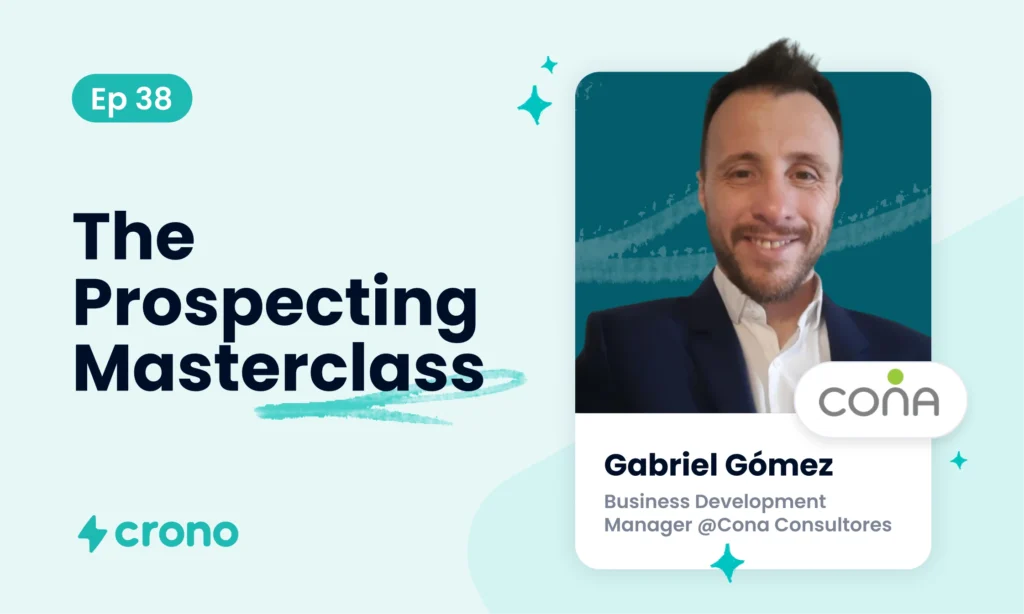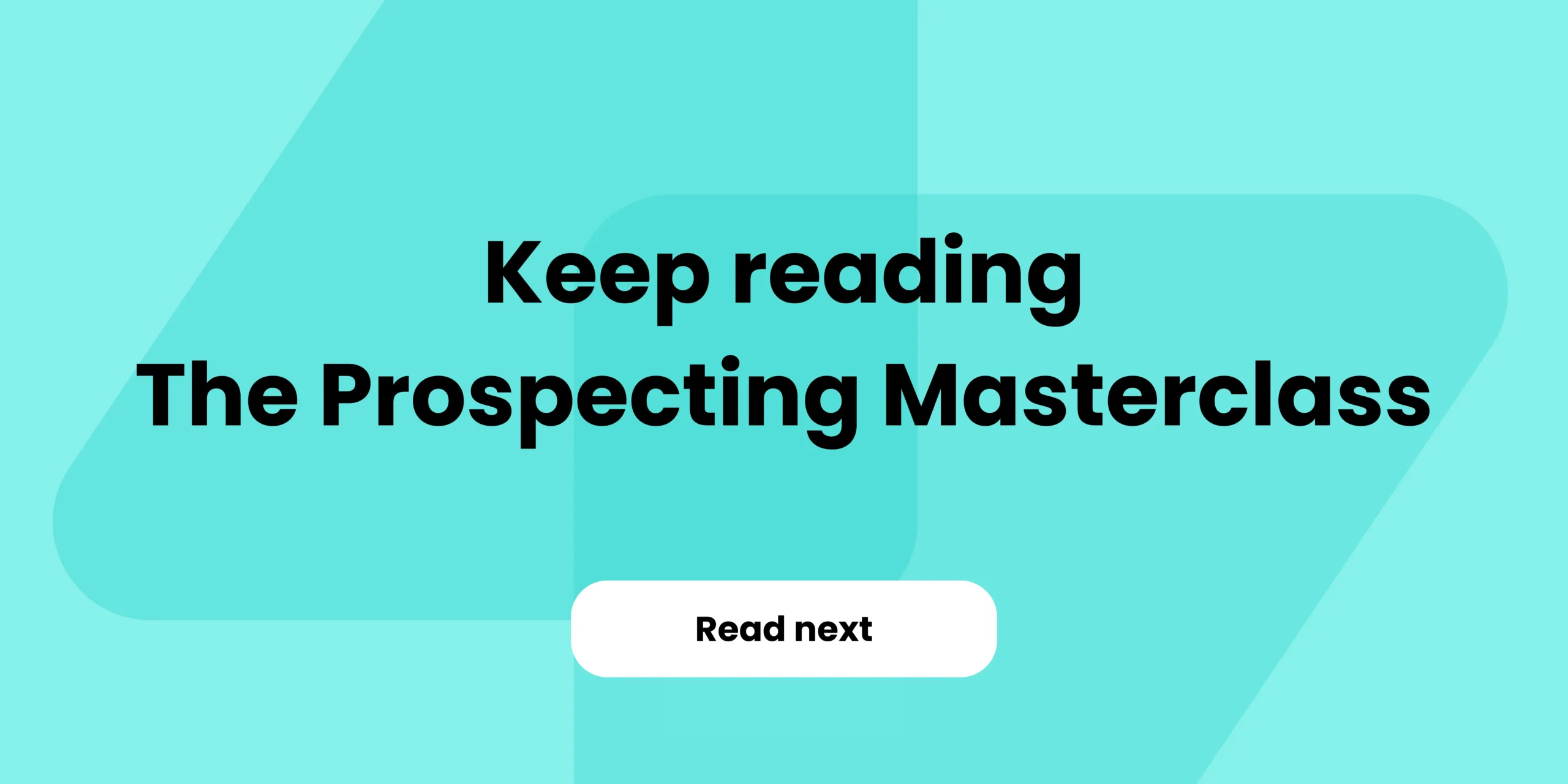Hey there Croners! Welcome back to The Prospecting Masterclass, the original Crono column that gives you insights and tips from the best minds in sales.
For this article we interviews Gabriel Gómez, Business Development Manager at Conas Consultores.
Together we’ll explore challenges and opportunities in sales in Latam, AI and the future of B2B sales.
Hey Gabriel, tell us about yourself: how did you end up in sales, and why do you still love it?
I came to the world of sales almost by chance, when I was just 18. I started selling computer courses in disadvantaged areas. From there, I worked in all types of sales, covering different formats and services, until I finally entered the world of marketing personnel solutions for companies in 2013.
Today I can say that I’m passionate about what I do, as it’s a dynamic, changing, and challenging segment. And I love challenges.
Now, we want to know more about LATAM and get some tips:
What are the biggest challenges and opportunities you see when running outbound campaigns in LATAM?
How does it differ from other markets?
Regarding Latin America, the biggest challenges in executing campaigns have to do with the adaptability and versatility with which commercial actions are designed, as it is a market of constant change due to unsettled socioeconomic contexts, often unpredictable.
Stability isn’t commonplace here. A phrase that should define every salesperson in LATAM is “Business isn’t forever here.”
This is where ambitious sales teams with a strong sense of renewal and pipeline nourishment are built.
Opportunities are always influenced by seasonality and are more visible if we have clearly defined segments/account types.
In your experience, what channels work best for outbound in LATAM today but are not so common elsewhere?
As for the channels that work best, we can name several (LinkedIn, social media in general, email, phone, corporate events), but the distinction itself lies in the presence of in-person visits.
We are undergoing a shift toward recovering in-person visits, which we see today makes a difference. Because they take you out of the tide of digital approach that often overwhelms prospects and clients.
With AI and automation becoming more prevalent, how do you see the role of human reps in shaping outbound sales strategies?
If we talk about AI, we can say that today it is applied to operational processes and the resolution or optimization of people’s work time, but not in sales.
I believe it could be useful and decisive for sales, only applied to the definition of faster and more specific market segmentations or analyses.
Today we are talking about digital colleagues. I believe that this concept, developed to improve sales management, is valid, but the execution of the final action and the front-line approach to potential accounts will always be the responsibility of the salesperson.
And your take on the future of outbound sales:
What are the topics and skills sales teams should focus on to stay ahead of the curve?
Sales teams must adapt to be more incisive on the ground, always with a clear strategy. Today, I believe we focus too much on strategy and reporting, decreasing the net time to sale. Making a difference means investing that time.
The future of sales lies in understanding that AI must be functional to the salesperson in their sales development, not the other way around.
Lead prospecting, account conversion, and subsequent quotes and closings are simpler with applied artificial intelligence, but they lack potential without adequate follow-up.
The main sales problem today is follow-up, beyond the tools available. It’s also the reinvention of strategies in difficult times. In times of crisis, we must be most creative.
Understanding difficulty as an opportunity is vital to success.

